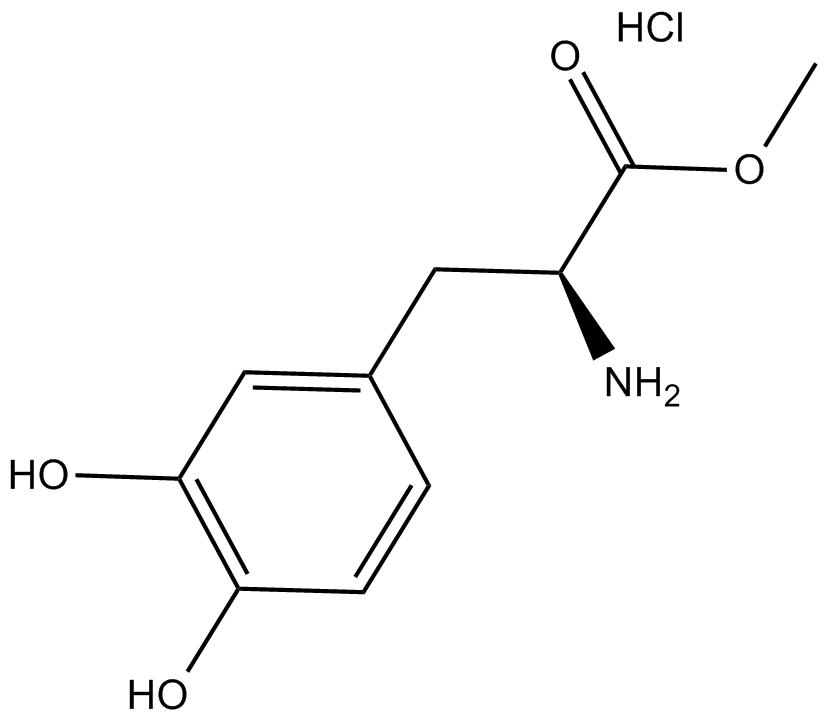L-DOPA methyl ester (hydrochloride) (Synonyms: 3,4-Dihydroxyphenylalanine methyl ester,LDME,Levodopa methyl ester,ST 41769) |
| Catalog No.GC14281 |
dopamine D1 receptor agonist
Products are for research use only. Not for human use. We do not sell to patients.

Cas No.: 1421-65-4
Sample solution is provided at 25 µL, 10mM.
L-DOPA methyl ester is a dopamine D1 receptor agonist.
The D1 subtype of the dopamine receptor is the most abundant dopamine receptor in the central nervous system. D1 receptors can regulate neuronal growth and development, mediate some behavioral responses, and modulate dopamine receptor D2-mediated events.
In vitro: L-DOPA methyl ester is a neutral derivative of L-DOPA formulated for increased solubility compared to the parent compound. L-DOPA is a metabolic precursor of dopamine that is capable of crossing the blood brain barrier to act as a dopamine D1 receptor agonist [1].
In vivo: On intraperitoneal or subcutaneous administration to mice L-Dopa methyl ester was found to be equivalent to L-Dopa in reversing reserpine-induced akinesia and producing contraversive circling behaviour in rats. On oral administration the methyl ester was even more active. The administration of L-Dopa or the methyl ester had equivalent changes of metabolite levels in striatal and mesolimbic dopamine, homovanillic acid, as well as 3,4-dihydroxyphenylacetic acid [2].
Clinical trial: Five sublingual and five subcutaneous doses of L-dopa methyl ester were given to seven patients with idiopathic Parkinson's disease and motor fluctuations. Motor assessments were conducted using the modified Webster scale. Results showed that two patients switched "on" with subcutaneous L-dopa methyl ester with the same quality and duration of therapeutic effect seen after their oral levodopa doses. The time from injection to full switch "on" was 60 minutes in both patients. Two patients had no effect over the entire observation period of 90 minutes and another one experienced onset-of-dose dyskinesias continuing for 110 minutes without ever switching fully "on" [3].
References:
[1] Berends, H. I.,Nijlant, J.M.M.,Movig, K.L.L., et al. The clinical use of drugs influencing neurotransmitters in the brain to promote motor recovery after stroke; a Cochrane systematic review. European Journal of Physical and Rehabilitation Medicine 45(4), 621-630 (2009).
[2] Cooper DR, Marrel C, Testa B, van de Waterbeemd H, Quinn N, Jenner P, Marsden CD. L-Dopa methyl ester--a candidate for chronic systemic delivery of L-Dopa in Parkinson's disease. Clin Neuropharmacol. 1984;7(1):89-98.
[3] Kleedorfer, B. ,Lees, A.J. and Stern, G.M. Subcutaneous and sublingual levodopa methyl ester in Parkinson’s disease. J.Neurol.Neurosurg.Psychiatry 54(4), 373 (1991).
Average Rating: 5 (Based on Reviews and 23 reference(s) in Google Scholar.)
GLPBIO products are for RESEARCH USE ONLY. Please make sure your review or question is research based.
Required fields are marked with *




















